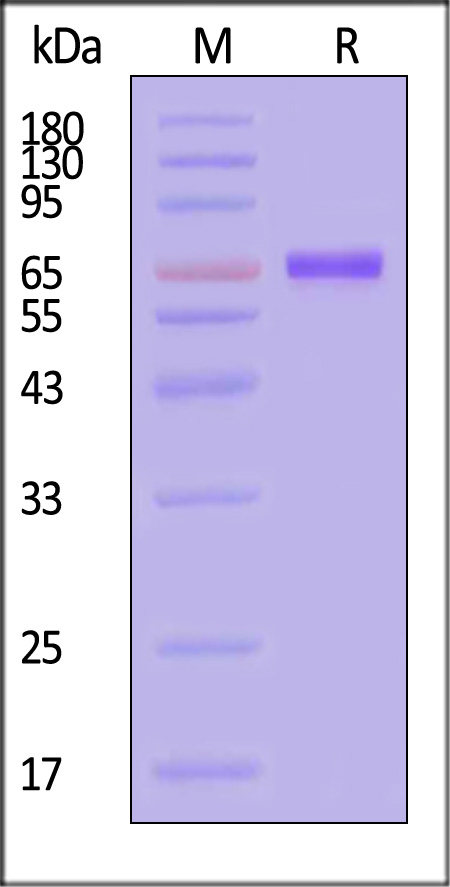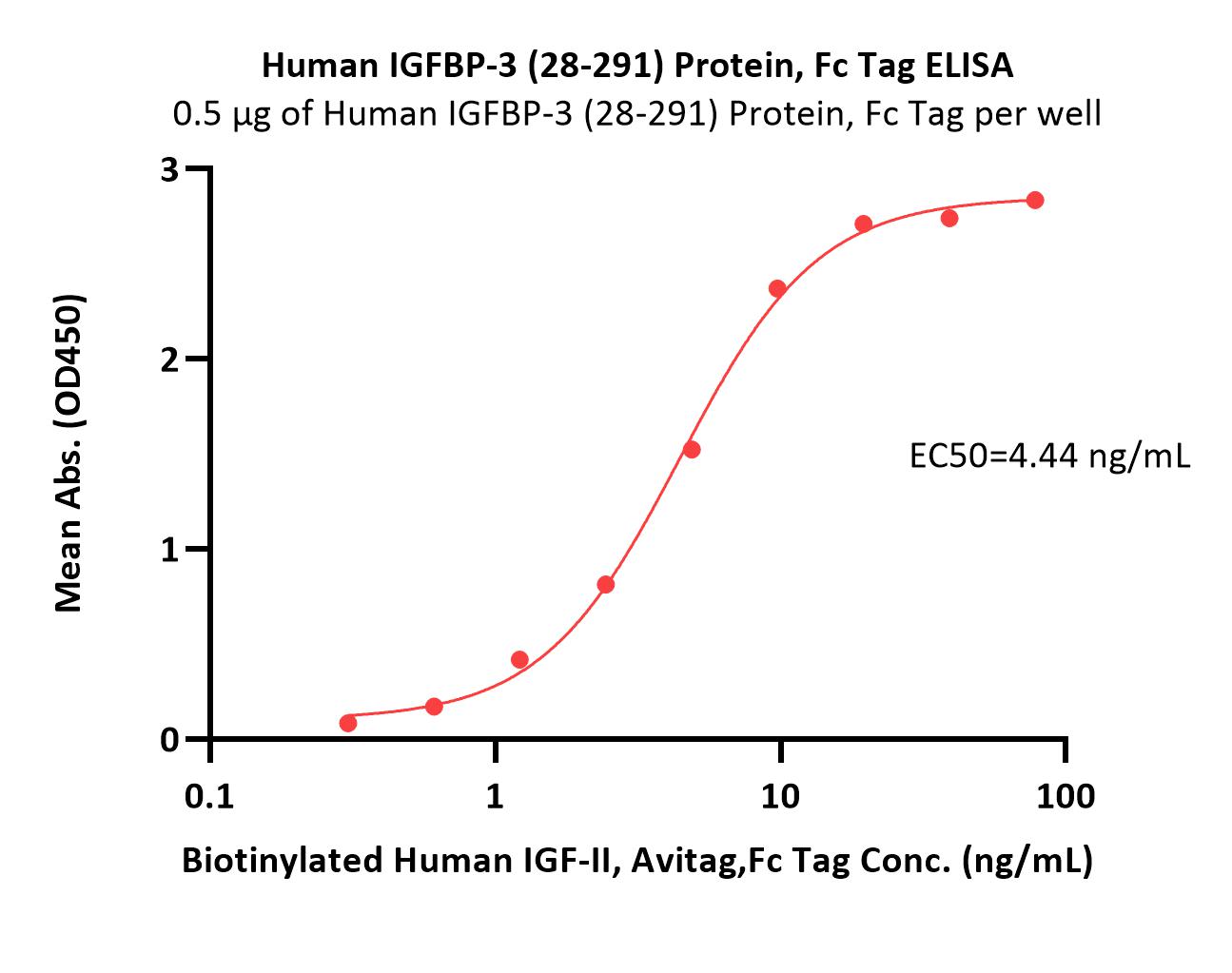分子别名(Synonym)
IGFBP3,BP-53,IBP3
表达区间及表达系统(Source)
Human IGFBP-3 (28-291) Protein, Fc Tag (IG3-H5253) is expressed from human 293 cells (HEK293). It contains AA Gly 28 - Lys 291 (Accession # P17936-1).
Predicted N-terminus: Gly 28
Request for sequence
蛋白结构(Molecular Characterization)

This protein carries a human IgG1 Fc tag at the C-terminus.
The protein has a calculated MW of 55.2 kDa. The protein migrates as 65-80 kDa when calibrated against Star Ribbon Pre-stained Protein Marker under reducing (R) condition (SDS-PAGE) due to glycosylation.
内毒素(Endotoxin)
Less than 1.0 EU per μg by the LAL method.
纯度(Purity)
>90% as determined by SDS-PAGE.
制剂(Formulation)
Lyophilized from 0.22 μm filtered solution in PBS, pH7.4 with trehalose as protectant.
Contact us for customized product form or formulation.
重构方法(Reconstitution)
Please see Certificate of Analysis for specific instructions.
For best performance, we strongly recommend you to follow the reconstitution protocol provided in the CoA.
存储(Storage)
For long term storage, the product should be stored at lyophilized state at -20°C or lower.
Please avoid repeated freeze-thaw cycles.
This product is stable after storage at:
- -20°C to -70°C for 12 months in lyophilized state;
- -70°C for 3 months under sterile conditions after reconstitution.
电泳(SDS-PAGE)

Human IGFBP-3 (28-291) Protein, Fc Tag on SDS-PAGE under reducing (R) condition. The gel was stained with Coomassie Blue. The purity of the protein is greater than 90% (With Star Ribbon Pre-stained Protein Marker).
活性(Bioactivity)-ELISA

Immobilized Human IGFBP-3 (28-291) Protein, Fc Tag (Cat. No. IG3-H5253) at 5 μg/mL (100 μL/well) can bind Biotinylated Human IGF-II, Avitag,Fc Tag (Cat. No. IG2-H82F9) with a linear range of 0.3-10 ng/mL (QC tested).
Protocol
背景(Background)
Insulin-like growth factor-binding protein 3 is also known as IGFBP3, is a protein that, in humans, is encoded by the IGFBP3 gene. IGFBP3 forms a ternary complex of about 140 ~150 kDa with IGF1 or IGF2 and a glycoprotein insulin-like growth factor acid-labile subunit (ALS), thus alter the interaction of IGFs with their cell surface receptors. IGFBP3 exerts either proapoptotic or growth stimulatory effects depending upon the cellular context. Studies have shown that IGFBP3 can leads to the induction of apoptosis dependent or independent of the IGF-IGF receptor axis, accordingly acts as a negative regulator of tumorigenesis and progressing in certain carcinomas. The highest expression level is found in the nonparanchymal cells of the liver. Expression levels are also higher during extrauterine life and peak during puberty.























































 膜杰作
膜杰作 Star Staining
Star Staining











